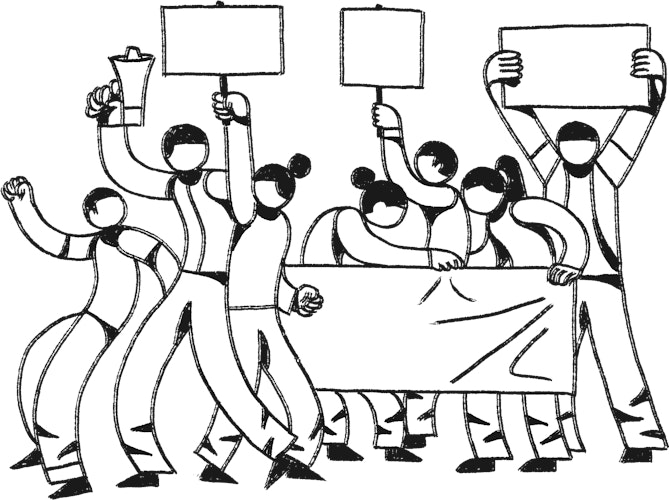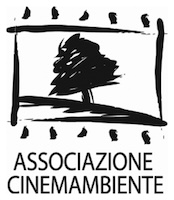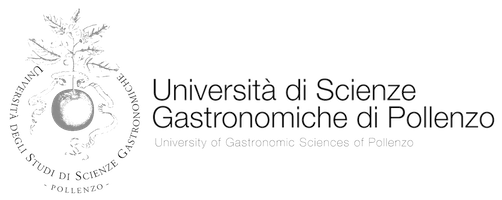Breaking the Bank
Directed by
Shot during the Washington demonstrations on the occasion of the IMF and World Bank summit, this video has been produced and distributed in the same way as Showdown in Seattle, but presents a more analytical slant. Through a skilled editing, the voices of the participants are assembled to offer a close analysis of how IMF and World Bank, together with WTO, deliberately promote human and environmental exploitation and impoverishment in underdeveloped countries, of how they support dictatorships and contribute to spread armed conflicts. The story of a native from Guatemala, who came to Washington to testify to the extermination of his village just because it stood in the way of a project financed by the World Bank, is one of the most touching moments. It also illustrates the participants' training in non-violent resistance techniques as well as the police's abuses and brutalities.
In-depth analysis
About the Movie Breaking the Bank
«“For globalization to work, America can't be afraid to act like the almighty superpower that it is. The hidden hand of the market will never work without a hidden fist. McDonald's cannot flourish without McDonald Douglas, the designer of the F-15, and the hidden fist that keeps the world safe for Silicon Valley's technology is called the United States Army”. (T. Friedman, New York Times. March 28th 1999)
“I'm under constant video control, this is the mantra policemen must repeat during the OCSE meeting in Bologna. They are under about 40 independent videomakers' control. Webcams have been placed at house windows. Information and filmmaking are common rights and no law can forbid them”. (Videomakers communication in the Italian Independent Media Center site, June 2000).
Undoubted merit of the Seattle revolt is to have increased the ecologist movements’ awareness of the close connections among environmental, commercial and foreign politics – remarks Senate Environment Committee’s President Fausto Giovannelli in his preface to the recent Italian translation of the World Watch Institute report about environment and globalization.
Not a case, at the centre of the demonstration that took “teamsters and turtles” finally together we find the three elements mentioned in the brutal but realistic statement of Thomas Friedman, one of the most prestigious globalization supporters: McDonald's, symbol of global bad-eating; his “hidden fist”, here manifesting itself in one of the most violent police repressions against citizens dissent ever put into effect since the 60s; finally Silicon Valley's jewel “Internet”, transformed into one of the key instruments of the global protest. Through the Web the various non-governmental organizations could coordinate their initiatives both in Seattle and in later meetings where they kept denouncing human sacrifice and environmental catastrophes caused by the big globalization policies. IMC, Independent Media Centers, is one of the nets originated in Seattle and spread on its wave. In the many cities where they sprang, the Centers coordinated independent journalists' work and diffused images and information through their web sites (www.indyme-dia.org). This was a work of counter-information and militant filmmaking, made by people directly involved in the protest and willing to diffuse it, which shows original and extremely effective forms, perfectly adequate to a movement that has its strength in the cooperations of different organizations.
At the same time it collects a rich if hardly known heritage, which is the context IMC's activity should be evaluated in. First of all, the work done in the previous two decades by a lot of US video collectives using cable TV for a communal and socially engaged cinema. Some of these groups, like Piper Tiger TV, were directly involved in forming the first IMCs and distributing their video products. They were carrying on the activity of filmmaker groups sprung all over the world during the revolts in the 60s: several US “Newsreels” collectives documenting and supporting students' protests, Black Panthers, women's lib and the new left wing's struggles; European militant cinema collectives taking the cameras into the factories, particularly in France, Italy and Germany; finally Latin America's newsreels, such as Cuban “Cinemobiles” or Mexican “Communicados”.
That was a cinema shot, screened and discussed just where struggles were going on; better if directly by the strugglers themselves. Manuli Brugherio workers occupying their factory just after the screening of a film (Apollon, 1969), where other workers documented their own sit-in, is a clear example of an ideal of cinema first of all as an instrument of fight. It also wanted to be conceived as a people to people communication opposed to the one to people communication of official cinema and TV, a formula coined by Bertoldt Brecht for the radio and later used by Cesare Zavattini in his bullettins to describe his 1969 “Free Newsreels”. If we examine the IMC net in light of the intents expressed in those texts, which exemplify the general aspirations of that period, we surprisingly realize that it is the best technical instrument and organization to realize those intents. It is a structure that allows the circulation of images accompanied by information and thorough analyses; that offers a constantly updated flux of information like television but, unlike it, also permits the elaboration of critical consciousness thanks to the navigation into archives built day by day; that is open to everybody, but is also aware of needing an editing policy collectively and transparently worked out; that allows debates between single individuals and groups, joined by the common wish to be informed and to transform reality. Technical aspects are also to be considered but not overrated to the detriment of the different social forms (productive, distributive and related to fruition) which constitute a fundamental part of a politically oriented cinema. The militant cinema of the 60s has certainly been possible thanks to the portable 16mm camera allowing direct sound taking and offering more flexibility and lower costs than 35mm, although in some of the above-mentioned cases they continued to use 35mm (Cuba) or even the cheaper super8 (in Mexico and sometimes even in Europe). The video camera has been a further step forward in this direction, so much so that Godard, supporting this view in 1968, commented: “Everybody will be able to make his/her own news. That's the important thing”. On the other hand technical progress is not always a guarantee of democratic communication, as proved by many TV trash programmes resulting from the diffusion of low cost video cameras. The last example in this anecdotal journey back into the history of authentically political cinema is that of Workers Film and Photo League, a net of cine-clubs which used an outdated and therefore economically accessible technology such as silent films after the introduction of the sound. In a country devastated by the great depression, where the monopolized circuit of movie theatres had banned newsreels from hinting to the dramatic economic situation, these film director associations, sprung in several cities and connected to similar ones in Europe, documented “starvation marches” and unemployed people's protests with films made and screened in alternative places and forms. Later, a lot of these directors would support the agricultural reforms of the “New Deal”, making some of the first films denouncing the environmental damage caused by unprincipled policies. All this had occurred a few years before a new war broke out, replacing public works as a solution to the harmful effects of the globalization oriented capitalism called imperialism. And also before independent cinema was silenced for a long time in America and in Europe».
(Marco Farano)








